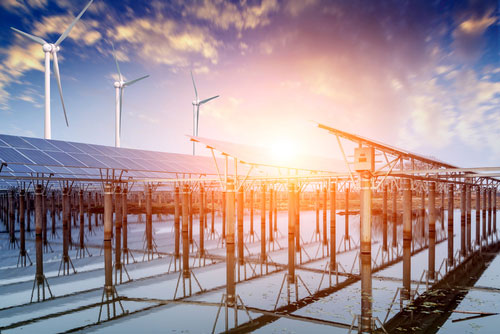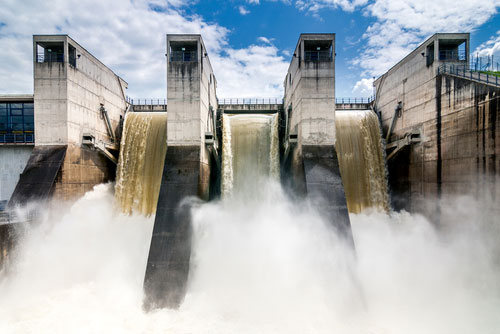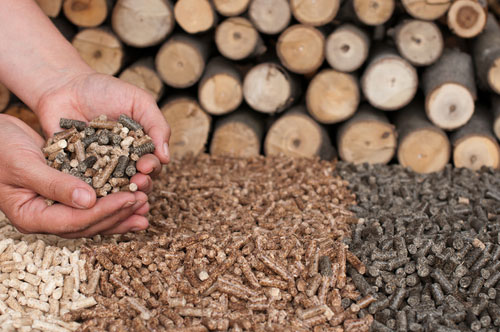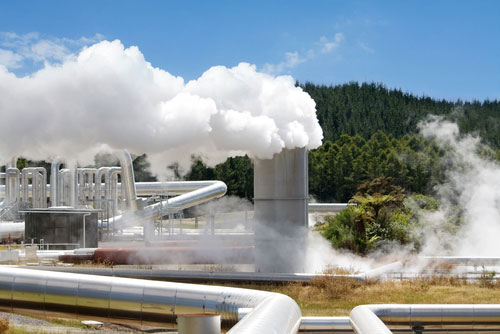1. what / a / carbon / is / footprint
2. oil / is / why / energy / source / non-renewable / a
3. should / we / why / energy / save ?
4. the countryside / a big city. / has / fewer problems / than
Answer these question:
1.What is a carbon footprint?
2.Why is oil ia a non-renewable energy?
3.What are the disadvantages of nuclear power?
4.What should we do to reduce our electric bills?
5.What should the goverment do to reduce the use of petrol?
Sai đề rồi nha bạn Carbon không có nghĩa còn footprint là dấu chân
Topic : Energy
1.List the type of enery you know
2.What type of energy source is wind?
3.Why sunlight is a renewable resource?
4.What is a carbon footprint?
5.How much is your footprint?
6..What things can you think might create a big carbon footprint?
7.What kind of energy resources are non-renewable?
8.What do you do at home to reduce the amout of footprint?
9.What are the adventages and disavantages of solar energy?
10.What are the adventages and disavantages of hydropower energy?
Đây là các gợi í các bạn dùng các gợi í để viết thành 1 đoạn văn logic nhé >< phải phù hợp đấy :D hihi mk cảm ơn nhìu
→Natural Gas← viết về cái nè nhé
A natural gas flame
Ervins Strauhmanis, Flickr (link is external)
A gas that is made up mostly of methane and found near other fossil fuels, like coal. Methanogenic processes occurring in landfills and marshes also produce natural gas. Like petroleum, natural gas must first be processed before we can use it as a fuel. It is important to remove most of the other components of natural gas until it is almost purely methane. When combusted, natural gas produces only about half the greenhouse gas emissions as coal does, making it a popular fossil fuel in our increasingly carbon-conscious society. Take a look at these oil- and gas-related maps (link is external) to learn more about natural gas production and reserves in the United States.
1 what is a carbon footprint
2 do you have a big carbon footprint
3 can you name some sources of energy? what are they?
4 why is sunlight a renewable source? why?
1. The negative effect we have on the environment.
2. Yes, I do.
3. Name some sources of energy: solar, sunlight, wind, oil, coal, natural gas,...
Renewable sources: solar, sunlight, wind,...
Non - renewable sources: oil, coal, natural gas,...
4. Because sunlight we can' t use them all up - they will last forever.
Choose the correct answer:
1. Solar energy (will use/ will be used/ will be using/ is used) in the world in the future.
2. (Wind/ Oil/ Coal/ Natural gas) power is renewable source.
3. The energy we use that produces carbon dioxide might create a big (non-renewable energy source/ renewable energy source/ carbon footprint/ fossil fuels)
4. "Non-renewable energy" means that it will (produce/ run out/ replace/create)
5. People put (plastics/ solar panels/ nuclear/ biogas) on the roof to catch the sun's energy.
1. Solar energy (will use/ will be used/ will be using/ is used) in the world in the future.
2. (Wind/ Oil/ Coal/ Natural gas) power is renewable source.
3. The energy we use that produces carbon dioxide might create a big (non-renewable energy source/ renewable energy source/ carbon footprint/ fossil fuels)
4. "Non-renewable energy" means that it will (produce/ run out/ replace/create)
5. People put (plastics/ solar panels/ nuclear/ biogas) on the roof to catch the sun's energy.
Tham khảo:
1. Solar energy (will use/ will be used/ will be using/ is used) in the world in the future.
2. (Wind/ Oil/ Coal/ Natural gas) power is renewable source.
3. The energy we use that produces carbon dioxide might create a big (non-renewable energy source/ renewable energy source/ carbon footprint/ fossil fuels)
4. "Non-renewable energy" means that it will (produce/ run out/ replace/create)
5. People put (plastics/ solar panels/ nuclear/ biogas) on the roof to catch the sun's energy.
1. What should we do to ___ electricity?
A cut b take c save d waste
2. we should use ___ light bulbs in our homes.
a low energy
b little energy
c a bit enery
d efficient
3. In my opinion, nuclear power is not only expensive but also ___ to our environment.
A. danger
B. dangerous
C. risk
D. disater
4. Some's carbon ___ is a measurement of the amount of carbon dioxide that their activires produce.
A, effect
B. amount
C. footprint
D. energy
5. Several governments try to ___ the use of fossil fuels.
A. reduce
B. increase
C. waste
D. save
6. we are looking for cheap, clean and ___ sources of energy.
A. effective
B. efficient
C. serious
D. dangerous
7. ___ source of energy is the source that can't be replaced after use
A. renewable
B. natural
C. effective
D. non-renewable
8. ___ wave energy is a source of ___ energy
A. environment friendly
B environmental friendly
C. environmentally friendly
D. environmentally friendliness
1. What should we do to ___ electricity?
A cut b take c save d waste
2. we should use ___ light bulbs in our homes.
a low energy
b little energy
c a bit enery
d efficient
3. In my opinion, nuclear power is not only expensive but also ___ to our environment.
A. danger
B. dangerous
C. risk
D. disater
4. Some's carbon ___ is a measurement of the amount of carbon dioxide that their activires produce.
A, effect
B. amount
C. footprint
D. energy
5. Several governments try to ___ the use of fossil fuels.
A. reduce
B. increase
C. waste
D. save
6. we are looking for cheap, clean and ___ sources of energy.
A. effective
B. efficient
C. serious
D. dangerous
7. ___ source of energy is the source that can't be replaced after use
A. renewable
B. natural
C. effective
D. non-renewable
8. ___ wave energy is a source of ___ energy
A. environment friendly
B environmental friendly
C. environmentally friendly
D. environmentally friendliness
1. What should we do to ___ electricity?
A cut b take c save d waste
2. we should use ___ light bulbs in our homes.
a low energy
b little energy
c a bit enery
d efficient
3. In my opinion, nuclear power is not only expensive but also ___ to our environment.
A. danger
B. dangerous
C. risk
D. disater
4. Some's carbon ___ is a measurement of the amount of carbon dioxide that their activires produce.
A, effect
B. amount
C. footprint
D. energy
5. Several governments try to ___ the use of fossil fuels.
A. reduce
B. increase
C. waste
D. save
6. we are looking for cheap, clean and ___ sources of energy.
A. effective
B. efficient
C. serious
D. dangerous
7. ___ source of energy is the source that can't be replaced after use
A. renewable
B. natural
C. effective
D. non-renewable
8. ___ wave energy is a source of ___ energy
A. environment friendly
B environmental friendly
C. environmentally friendly
D. environmentally friendliness
mọi người ơi giúp mình làm 1 đoạn ngắn ( hết sức có thể) về 4 topic nayf vs mai minhf thi rồi
TOPIC 1 trafic problems
1 tell the place where there are often traffic jams
2 when ?
3 why ?
4 how to solve/ your thinking ?
TOPIC 2 favourite films ( nếu cs thể là film big ben down)
1 name some film
2 type ò film/ actors / director ?
3 how is the film / what happens in the film and its ending?
4 do you recommend to everyone ? why?
TOPIC 3 festivals ( nếu có thể là lễ hội tết )
1 name ò the festival ?
2 when and where is it held ?
3 how and why is it held ?
4 what festival is about?
TOPIC 4 saving energy
1 what should people do to save energy ?
2 renewable / non-renewable sources?
3 how do you go to school/ how can you save energy
4 energy source in the future?
Sắp xếp các từ để tạo thành câu
1.sources/you/some/can/name/non-renewable/?
2. source/solar/a/renewable/is/energy/energy/of/.
3. leave/off/you/home/the/light/turn/should/before/you.
4. should/to/electricity/how/we/do/save/?
5. protect/in/energy/environment/we/use/wind/future/may/to/the.
6. source/of/environment/are/good/energy/renewable/for/.
7. solar/solar/power/panels/we/through/get
1.sources/you/some/can/name/non-renewable/?
- Can you name some non-renewable sources?
2. source/solar/a/renewable/is/energy/energy/of/.
- Solar energy is a renewable source of energy.
3. leave/off/you/home/the/light/turn/should/before/you.
- You should turn off the light before you leave home.
4. should/to/electricity/how/we/do/save/?
- How should we do to save electricity?
5. protect/in/energy/environment/we/use/wind/future/may/to/the.
- We may use wind energy in the future to protect environment.
6. source/of/environment/are/good/energy/renewable/for/.
- Renewable source of energy are good for environment.
7. solar/solar/power/panels/we/through/get.
- We get solar energy through solar panels.
![]()
Topic 1
1 What is renewable energy? Give some examples.
2 What is non-renewable energy? Give some examples.
Topic 2
1 Which hour are rush hours in your community?
2 Why should we travel by public transport instead of private transport?
3 What difficulties do you meet when you are stuck in a traffic jam?
4 What means of transport do you think will be used in the future?
Topic 3
1 Give four problems of overpopulation
2 Give measures to solve these problems
Renewable energies (or renewables) are ways to generate energy from (theoreally) unlimited natural resources. These resources are either available with no time limit or replenish more quickly than the rate at which they are consumed.
Renewable energies are generally spoken of as opposed to fossil fuel energies. The fossil fuels’ stocks are limited and non-renewable in the human timescale. The most known examples of these resources are coal, oil or natural gas. On the contrary, renewable energies are produced from renewable sources. Here, we’re talking about energy coming from solar rays, wind or water cycles – all theoreally unlimited on a human scale time.
Renewable energies are also often referred to as “green energies” or “clean energies”. Still, this doesn’t mean that these energies aren’t harmful to the environment and have zero impact. Nonetheless, they have a low environmental impact compared to fossil fuels. That’s why they’re increasingly becoming important elements in companies’ CSR strategies in terms of sustainable development.
There are several types of renewable energies that are produced by different sources such as the sun, wind or water. In fact, these renewables’ power consumption has been growing over the last year. They have provided 8% of the world’s electricity in 2017 and they now cover 1/3 of the power mix in Europe. At the same time, the energy grid gets 1/4 of the total energy in China and 1/6 in the United States, India, and Japan. Let’s learn more about them below.
Related content:Is Solar Energy Really Green And Sustainable?1 – Solar Energy

This type of renewable energy comes directly from the capture of solar radiation. Here, the solar radiation is absorbed by specific sensors and rebroadcasted following 2 possible operation modes:
Examples of Solar Energy in the World
It’s estimated that in 2017 1,6% of the worldwide generated energy came from solar sources. At the same time, solar power also contributed to 20% of the total energy growth in this same year. Some of the most known sources of solar energy are:
The Kurnool Ultra Solar Park in India. It has a total generation capacity of 1000MW and over 4 million solar panels installed;The Longyangxia Solar Park in China that has a total capacity of 850MW and covers around 25sq km.The Kamuthi Solar Facility in India: it has a total capacity of 648MV and covers 10sq km.Is Solar Energy Renewable or Nonrenewable?
Solar energy is inexhaustible in the sense that it will cease once the solar system’s star – the sun – dies. However, many people wonder if, from a perspective of human’s being able to capture and use solar energy in the long-term, whether solar energy is renewable or nonrenewable.
[Full answer available soon.]
2 – Windpower, a Renewable Energy
Wind power is another renewable energy. Here, the wind’s kine energy makes turbines spin and creates a mechanical movement. Afterward, a generator transforms this mechanical energy into electricity. There are several types of wind renewable energies: onshore wind turbines, off-shore wind turbines and even floating wind turbines. But the operating principles are basically the same for all these types of wind-generated energy.
Examples of Wind Power in the World
Wind power continues has also been growing, In fact, it provided 4.4% of global power generation in 2017. The highest installed wind capacity belongs to China (164GW). At the same time, in the EU, wind power provides 15% or more of the energy generated in several countries such as Germany, Portugal or Lithuania. Some of the most known sources of wind power energy are:
The Gansu Wind Farm in China. It is still under construction and it will be able to produce 20,000MV of power by 2020;The onshore Muppandal Wind Farm in India with a capacity of 1,500MW and over 3000 turbines;The Alta Wind Energy Center in the U.S. with a total capacity of 1,548MW that’s expected to reach 3,000MW by 2040;The Walney Extension in the UK. It has a total capacity of 659MW and it’s the world’s largest offshore farm.3 – Hydro-Electric Power

Hydro-electric power consists in the transformation of the kine energy of the water (from rivers, dams, marine currents or tides) into mechanical energy by turbines.
Examples of hydro-electric power in the world
The Sihwa Lake Tidal Power Station in South Korea. This is the world’s biggest tidal power installation and it has a capacity of 254 MW;The Rance Tidal Power Station in Brittany, France, has a 240 MW capacity;The Three Gorges Dam in China is the world’s largest power station in terms of installed capacity (22,500 MW).4- Biomass

Biomass is made up of organic materials from plants or animals that contain stored energy. The combustion of these natural materials produces renewable energy. Some examples of generating energy from biomass are:
Related content:
Palm oil has a huge environmental impact. What’s the impact of its use as a biofuel?What Is Biogas Energy Production?Examples of Biomass Energy in the World
Some of the most known biomass power plants in the world are:
The Iron Bridge power station in the UK, with a capacity of 740MW. It uses wood pellets as the main fuel;The Alholmenskaft power station in Finland. It has a 260MW energy generation capacity;The Polaniec power plant in Poland that uses mainly agricultural by-products and wood residues. It has a 205MW capacity.5- Geothermal Power as a Renewable Energy

The Earth generates and stores geothermal energy. In other words, radioactive materials decaying inside the Earth are emitting energy. Electricity can be created using directly or indirectly this energy, depending on the technology implemented. There are 3 main ways to use geothermal energy: